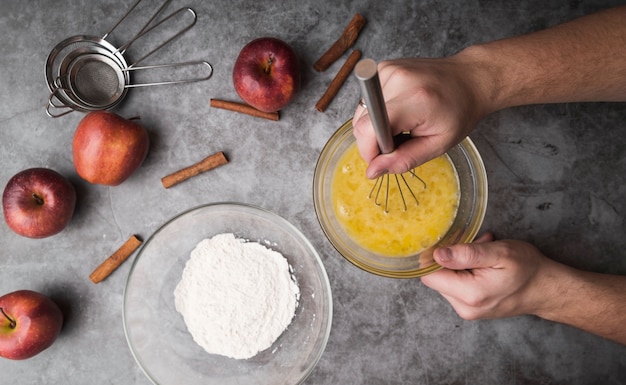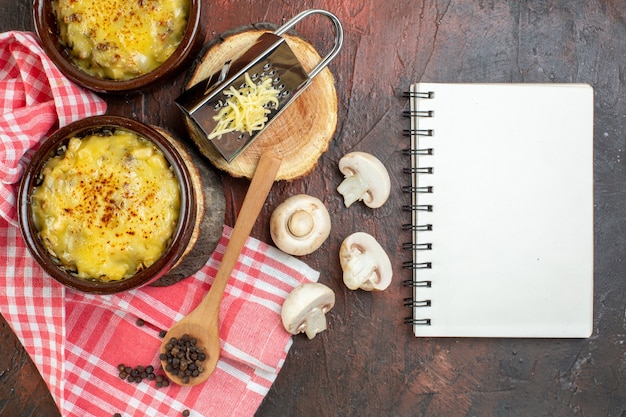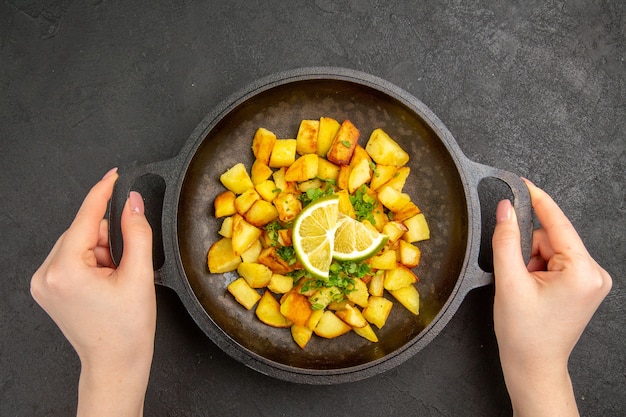Part 1: The Basics of Polenta

1.1 The Star of the Show: Cornmeal
Right, let’s start with the foundation of any good polenta: cornmeal. It’s the heart and soul of the dish, and there’s a world of difference between the various types. You’ve got your coarse, medium, and fine grinds, each with its own distinct texture and flavour. I personally prefer medium-grind cornmeal, as it strikes a lovely balance between creaminess and a bit of chew. It’s the Goldilocks of cornmeal – not too coarse, not too fine. But hey, don’t be afraid to experiment! You might find yourself loving a coarser grind, perfect for that rustic feel, or a fine grind, which melts in your mouth like a dream.1.1.1 A Quick Guide to Cornmeal Grinds
| Grind | Texture | Best Uses ||---|---|---|| Coarse | Gritty, with a distinct chew | Polenta for a rustic feel, for baking, for making fritters || Medium | Creamy with a bit of chew | Classic polenta, versatile for a wide range of dishes || Fine | Smooth, melts in the mouth | Polenta for a delicate texture, for sauces, for baking |1.2 The Magic of Liquid
Now, onto the liquid, which brings everything together. The most common choice is water, of course, but don’t be afraid to get creative! Broth, milk, or even a mixture of all three can add depth and richness to your polenta. I’ve even used vegetable broth for a flavourful vegetarian twist – it was a revelation!1.2.1 Liquid Options:
- Water: The classic choice, offering a clean, neutral base for your polenta.
- Broth: Adds depth of flavour and can be used to create a more hearty polenta. Chicken, vegetable, or beef broth all work well.
- Milk: Enhances creaminess and richness. You can use cow's milk, oat milk, almond milk, or any other type you prefer.
- Combination: Mix water, broth, and milk for a truly luxurious polenta.
1.3 The Secret Weapon: Butter
We can't forget about butter! That velvety, creamy goodness adds a touch of richness that makes all the difference. Trust me, a knob of butter stirred into your polenta is a game-changer. It adds a lovely depth of flavour and makes the whole dish sing.Part 2: Making Perfect Polenta

2.1 Getting Started
So, you’ve got your cornmeal, liquid, and butter. Now what? It’s actually quite simple! Bring your chosen liquid to a boil in a saucepan. Then, slowly whisk in your cornmeal, making sure there are no lumps. Reduce the heat to a simmer and cook, stirring frequently, until the polenta thickens.2.2 Timing is Key
Here's the thing: polenta takes time. You're looking at around 30 to 45 minutes for a truly creamy and cooked-through dish. Patience is key, my friend. Don't rush the process. The longer you cook it, the smoother and silkier your polenta will be.2.3 The Art of Stirring
While your polenta is simmering away, make sure to stir it regularly. This prevents it from sticking to the bottom of the pan and ensures an even cook. I find a wooden spoon is perfect for the job, giving you good control and a nice smooth finish.2.4 Checking for Doneness
How do you know when your polenta is ready? It should be thick enough to coat the back of a spoon, but still smooth and creamy. You can also test it by dipping a spoon into the polenta and letting it cool slightly. If it sets up quickly and holds its shape, it’s ready to go!Part 3: Polenta Variations

3.1 Creamy Polenta
This is the classic version, perfect for a simple yet satisfying meal. The key is to cook it until it’s smooth and creamy, with just a hint of chew. Serve it hot, topped with your favourite cheeses, vegetables, or even a drizzle of olive oil.3.2 Polenta Fritters
Now, for something a bit different! Once your polenta is cool, you can turn it into delicious fritters. Simply shape it into small patties, then pan-fry them until golden brown and crispy on the outside. These are perfect as a side dish or even as a light snack.3.3 Polenta Cakes
Feeling fancy? Try baking your polenta into delicious cakes. The texture is amazing, a bit like a dense cake. Get creative with the flavouring! I love adding herbs and spices, and a bit of grated cheese never hurts.3.4 Baked Polenta
Another fantastic variation is baked polenta. It’s a bit more hands-off than the stovetop method, but it results in a beautifully browned and slightly crispy top layer. Top it with your favourite ingredients and bake until golden brown and bubbly.Part 4: Polenta Toppings: A Feast for the Senses
4.1 Cheese, Glorious Cheese
Now, let’s talk about toppings! Cheese is, without a doubt, my favourite way to dress up polenta. Whether it’s a simple sprinkle of Parmesan or a luxurious dollop of ricotta, the possibilities are endless. My personal favourites? A rich and creamy gorgonzola, a sharp and tangy pecorino, or a classic parmesan.4.1.1 Cheese Pairing Tips:
- Sharp Cheeses: Pecorino, Parmesan, Manchego - these cheeses bring a strong, salty flavour that complements the earthy cornmeal.
- Creamy Cheeses: Ricotta, mascarpone, gorgonzola - these cheeses add a luxurious, creamy texture and a touch of sweetness.
- Melty Cheeses: Fontina, mozzarella, provolone - these cheeses melt beautifully, adding richness and a bit of gooey goodness.
4.2 Herbs and Spices
Don't underestimate the power of herbs and spices! They add a layer of flavour that can elevate your polenta from good to great. I love a sprinkle of fresh parsley, oregano, or basil. You can also experiment with chili flakes, garlic powder, or even a pinch of paprika for a little kick.4.3 Vegetables and Sauces
And then there are the vegetables! roast vegetables, sauteed mushrooms, or even a simple salad – they all pair beautifully with polenta. And don’t forget about sauces! A rich tomato sauce, a creamy pesto, or a simple olive oil drizzle – the options are truly endless.4.3.1 Vegetable Inspiration:
- Roasted Vegetables: Roasted peppers, zucchini, eggplant, and asparagus all offer a sweet and smoky flavour that complements polenta.
- Sauteed Mushrooms: Earthy and flavorful, sauteed mushrooms add a delicious umami punch to your polenta.
- fresh greens: A simple salad of arugula, spinach, or romaine lettuce adds a fresh and vibrant counterpoint to the richness of the polenta.
Part 5: Polenta for Every Occasion
5.1 Polenta as a Side Dish
Polenta is a perfect side dish for a variety of main courses. It's particularly delicious with roasted meats, grilled fish, and hearty stews. It's also a great accompaniment to vegetarian dishes, providing a comforting base for vegetables and sauces.5.2 Polenta as a Main Course
Yes, you read that right! Polenta can be a main course, especially when dressed up with delicious toppings. Think of it as a blank canvas, perfect for showcasing your culinary creativity. Imagine it piled high with roasted vegetables, cheese, and a drizzle of pesto. Delicious!5.3 Polenta for Breakfast
I know, I know, you might be thinking polenta for breakfast? Absolutely! It's surprisingly delightful. Try it topped with fruit, nuts, and a drizzle of maple syrup or honey for a sweet and satisfying start to your day.Part 6: Tips and Tricks from a Polenta Pro
6.1 The Lump-Free Secret
We’ve all been there. You’re whisking your cornmeal into the boiling liquid, and suddenly, lumps start forming. It’s a common problem, but there’s a simple solution: use a whisk! That’s right, a good whisk will help you incorporate the cornmeal smoothly, leaving you with a lump-free polenta.6.2 The Secret to Creamy Polenta
Want that silky smooth texture? Here's the trick: simmer your polenta for a bit longer. The longer you cook it, the more it will absorb the liquid, creating that velvety, luscious consistency. You can also add a splash of milk or cream towards the end of cooking for an extra dose of creaminess.6.3 The Art of Storing
Have leftover polenta? No problem! Simply let it cool completely, then transfer it to an airtight container and store it in the refrigerator for up to 3 days. You can even freeze it for later use. Just defrost it overnight in the refrigerator before reheating.Part 7: Polenta Around the World
7.1 Italy: The Birthplace of Polenta
Polenta's roots can be traced back to Italy, where it's been a staple dish for centuries. There, it's typically made with coarse-ground cornmeal and served with hearty dishes like braised meats, mushrooms, and cheese.7.2 Beyond Italy: Polenta’s Global Reach
But polenta’s influence extends far beyond Italy. In the United States, it’s often served as a side dish with BBQ, while in South America, it’s enjoyed with various stews and soups. Polenta’s adaptability and deliciousness have made it a global favourite.Part 8: FAQs
Q1: What type of cornmeal should I use for polenta?
For a classic polenta, I recommend medium-grind cornmeal. It offers a nice balance between creaminess and a bit of texture. But feel free to experiment with other grinds to find what you enjoy.
Q2: How long should I cook polenta?
Polenta takes time to cook properly. You should simmer it for about 30 to 45 minutes, stirring frequently, to achieve a creamy and cooked-through dish.
Q3: What can I add to polenta for flavour?
The possibilities are endless! Cheese, herbs, spices, vegetables, sauces, and even fruit can add a burst of flavour to your polenta. Get creative and experiment to find your favourites.
Q4: Can I make polenta ahead of time?
Absolutely! Leftover polenta can be stored in the refrigerator for up to 3 days. It can also be frozen for later use.
Q5: What are some interesting ways to serve polenta?
Polenta is incredibly versatile! It can be served as a side dish, a main course, or even for breakfast. Try it with grilled meats, roasted vegetables, cheese, or a simple drizzle of olive oil. Get creative and have fun with it!
Part 9: My Polenta Journey
You know, my journey with polenta has been a delightful one. I started out making simple, classic versions, but I’ve slowly branched out into more creative variations. I’ve learned so much about this versatile dish, and it’s become a staple in my kitchen. It’s a dish that’s always comforting, always satisfying, and always a joy to make.
So, what are you waiting for? Grab your cornmeal, your favourite liquid, and get cooking. I promise, you won’t be disappointed. Happy polenta-making, my friends!
Everyone is watching

How to Cook Frozen Lobster Tails Perfectly: A Step-by-Step Guide
RecipesLobster. Just the word conjures up images of lavish meals, special occasions, and a taste of luxury. But let's...

Pigs in a Blanket Cooking Time: How Long to Bake for Perfect Results
RecipesAh, pigs in a blanket. Just the name conjures up images of those delightful little parcels of crispy pastry en...

Pork Fillet Cooking Time: How Long to Cook It Perfectly
RecipesPork fillet, or tenderloin as it's sometimes called, is a real favourite in our house. It's so versatile, and...

The Ultimate Guide to Cooking Delicious Frankfurters
RecipesLet's face it, we all love a good frankfurter. It's a classic, simple, and always satisfying. But let's be rea...

Wolf Meat Recipes: A Guide to Cooking Wild Game
RecipesLet's be honest, you don't see wolf meat at your local butcher shop every day. It's a bit of a wild card, but ...
